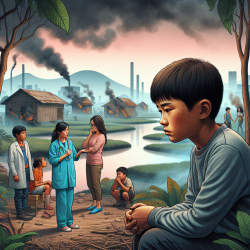Understanding the Impact of Environmental Risk Factors on Left-Behind Children
In the context of rural China, the phenomenon of "left-behind children" (LBC) is a pressing issue. These children, left under the care of relatives or even themselves due to parental migration to urban areas, face significant mental health challenges. A recent study published in the International Journal of Environmental Research and Public Health sheds light on how environmental risk factors contribute to depressive symptoms among LBC compared to their non-left-behind counterparts (NLBC).
Key Findings from the Research
The study, involving 1548 middle school students, reveals that LBC are more susceptible to depressive symptoms due to environmental risk factors such as peer victimization, perceived discrimination, and stressful life events. Notably, stressful life events have a more pronounced impact on LBC than on NLBC, highlighting a critical area for intervention.
- Peer Victimization: LBC who have been left behind for more than five years are particularly vulnerable to depressive symptoms due to peer victimization.
- Stressful Life Events: These events have the highest impact on LBC’s depressive symptoms, making them a priority for intervention strategies.
- Perceived Discrimination: While significant, its impact is less pronounced than stressful life events, suggesting the need for community education to reduce stigma.
Implications for Practitioners
For practitioners working with children in similar contexts, these findings underscore the importance of addressing environmental risk factors in intervention programs. Here are some actionable steps:
- Design interventions that specifically target the reduction of stressful life events and enhance coping mechanisms for LBC.
- Implement peer support systems to mitigate the effects of peer victimization.
- Engage in community education to foster inclusivity and reduce perceived discrimination against LBC.
Encouraging Further Research
While this study provides valuable insights, it also highlights the need for further research. Longitudinal studies could offer a deeper understanding of how these risk factors evolve over time. Additionally, exploring protective factors that could buffer LBC against these risks would be beneficial.
To read the original research paper, please follow this link: Environmental Risk Factors and Their Different Effects in Depressive Symptoms of Left-Behind Children in Rural China Compared with Non-Left-Behind Children.










